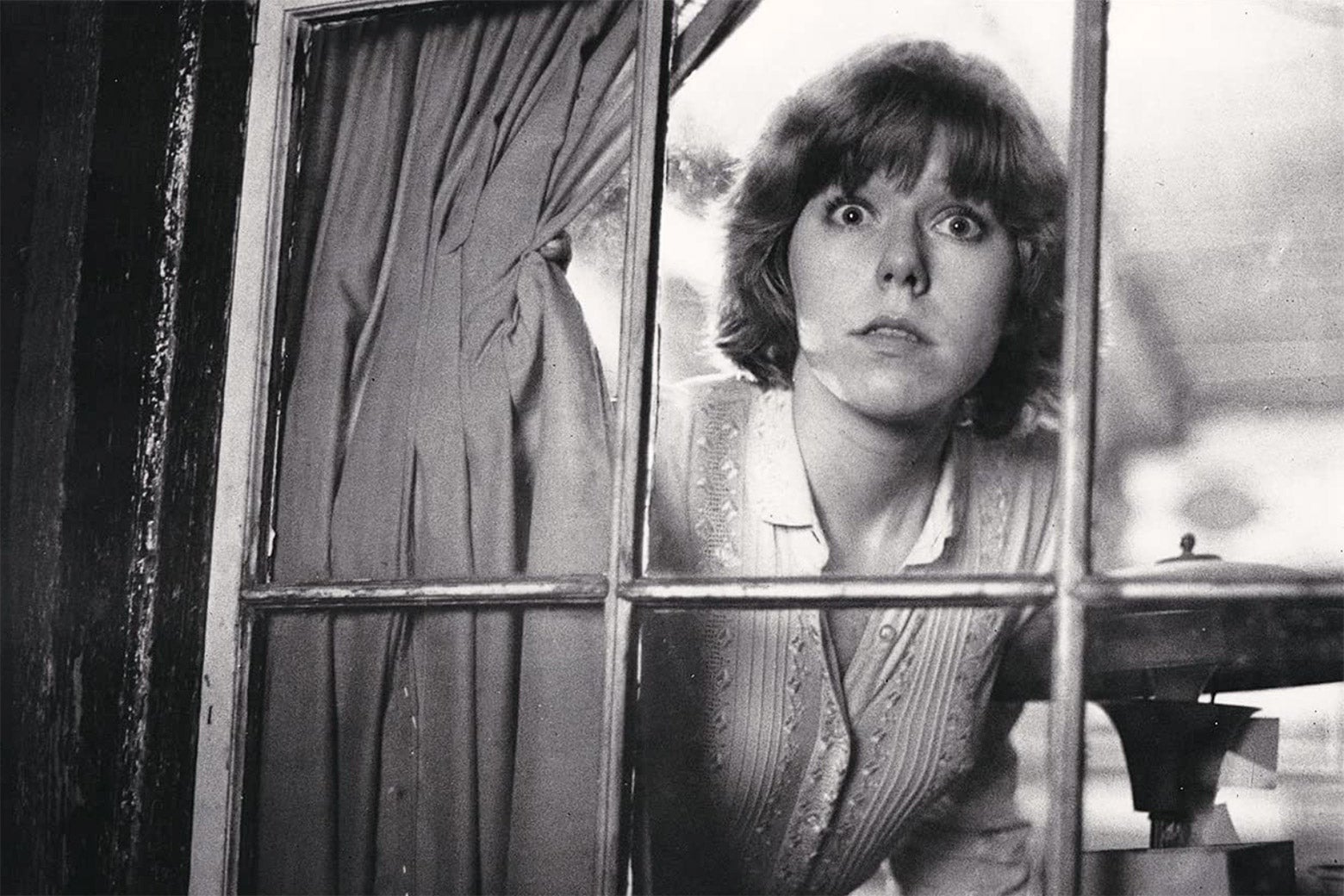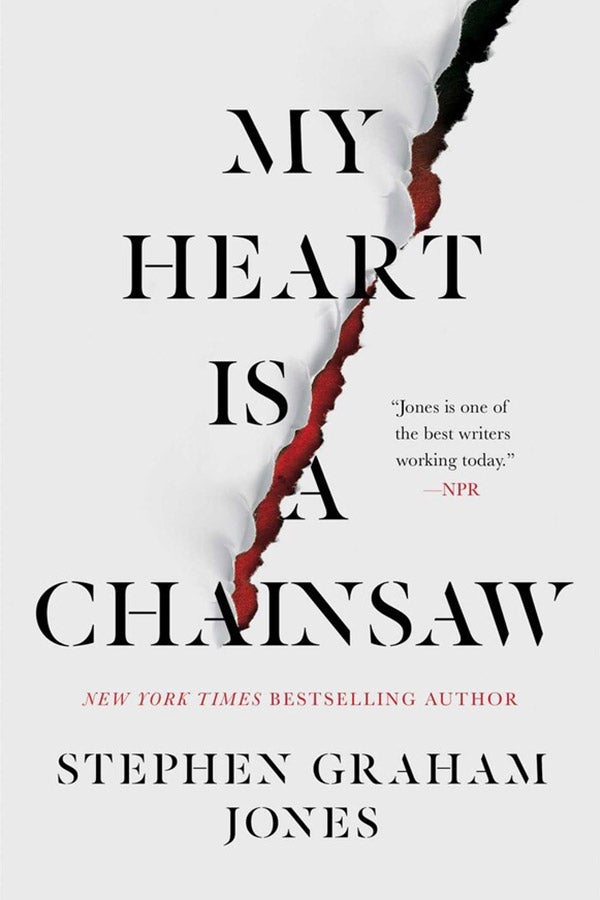Slate has relationships with various online retailers. If you buy something through our links, Slate may earn an affiliate commission. We update links when possible, but note that deals can expire and all prices are subject to change. All prices were up to date at the time of publication.
Long before the term was coined by Carol Clover in 1992, the “final girl” was a well-established trope. The lone female survivor, still standing at the end of the slasher movie. From the proto-final girl, Jess, in 1974’s Black Christmas, to the apotheosis of Halloween’s Laurie Strode in 1978, on through to Scream’s Sidney Prescott in 1996, the final girl changes very little. Typically white, sexually unavailable, averse to illicit behavior, and—this is key—masculinized in some way, by clothing, nickname, or appearance, the final girl survives the killer’s rampage because of her supposed moral superiority and uncorrupted purity. When Wes Craven’s Scream ushered the slasher into a phase of heightened self-awareness, it explicitly laid out the genre’s puritanically simple rules: “Have sex, you die. Take drugs, you die.”
It’s no surprise that these rules were codified in the ’80s, when the golden age of slashers rubbed awkwardly against a widespread social conservatism. You could even argue that the final girl was a trojan horse for conservative principles, packaging a guide to being a “good girl” inside stories aimed almost entirely at teenagers. This paternalistic strategy does permit some feminism to sneak in. As Clover herself pointed out, filmgoers begin with a focus on the killer but end up identifying with the final girl. Unfortunately, it’s a process that resets with each movie. The audience roots for and comes to identify with the woman, but it’s the killer we remember. Jason and his hockey mask, Freddy and his dagger glove, Candyman and his hook: these have each been woven into pop-culture fabric, whereas the various final girls remain faceless and forgettable.
Slashers have tried to correct this imbalance, either by further rounding the final girl’s character (See this year’s Fear Street adaptation), by giving her nostalgic weight (David Gordon Green’s retconned Halloween franchise), or by making the final girl cliché itself part of the fun (Scream and its imitators). However, the greatest innovations in this traditionally cinematic narrative are taking place away from the screen, in fiction. Novels allow, or even demand deeper characterization. Over enough pages, complexity creeps in, and the absurdity of these reductive feminine ideals is exposed. Sometimes that absurdity is itself a trope to be mined; after all, a meta approach is just as common in fiction as film. But a pair of novels released this summer move the conversation along, suturing together the irony of post-Scream slashers with an earnest—and moving—consideration of how the slasher narrative and its final girl can work in a culture newly awakened to the reality of male violence and female trauma.
We’ll start with Jones’ My Heart Is a Chainsaw, a book unashamedly in love with the slasher tradition. Published this month, it’s incredibly self-reflexive, full of ironically deployed tropes and clichés, and stuffed with references to movies that even committed horror buffs may not have seen. It also has a cool-as-hell protagonist who spits archly-goth lines like “horror’s not a symptom, it’s a love affair.”
[Read: The Ingenious Literary Slasher From the Author of The Only Good Indians]
But what at first seems like winking fan service becomes much more. Chainsaw is set in a small town in Idaho, where Native American teen, Jade Daniels, is not only fanatical about slasher movies, but actively on the lookout for a real-life final girl to stand against the violence she is sure will soon visit her town. That she never once considers herself for the role says something about the idealization of the final girl, and the erosion of Jade’s self-esteem. Jade knows “she will never be any kind of final girl, she has known for years. Final girls don’t wear combat boots to school … Final girls’ wrists aren’t open to the world.”
Jade’s scarred wrists have a backstory, though; one that is teased out as the novel progresses. Her life has been marred by abuse and neglect—squalid and more mundane than the horror in a movie, but also more damaging. Jade has turned horror into armor—the framework for her own suffering and a way to hide it from herself.
It’s Chainsaw’s sincerity—not its metafictional flourishes—that moves the slasher into newer territory. Yes, there is an orgy of bloodshed, and yes, Jade’s “training” in horror cinema helps her survive, but the emotional reward of the novel comes not with the climax, but with Jade’s confrontation with reality. She doesn’t need to be the classic, unattainable final girl; she can be herself. As she realizes, when it really matters: “this is no time to lose the line between movies and the real world.”
Grady Hendrix’s The Final Girl Support Group, published in July, blurs that line in a different way. In the novel, the members of the titular group are each the sole survivor of an encounter with evil men. The main protagonist, Lynette Tarkington, endured a Christmas massacre that riffs on Silent Night, Deadly Night. Others faced variations on The Texas Chainsaw Massacre, Halloween, Friday the 13th, A Nightmare on Elm Street, and even Leprechaun.
For years the girls (now middle-aged women) have gathered in the group to work on their trauma, with mixed results. Adrienne, has purchased the site of her own attack (a summer camp, naturally) and turned it into a retreat for victims of violence. Heather is recovering from addiction. Others have become wealthy or reclusive. Lynette lives a life of paranoia. Her apartment door is caged. She takes torturous public transport routes and has bug-out bags stashed around the city. She is always primed for the next attack and, therefore, the first to respond when a new assailant begins picking off the final girls one by one.
The plot moves on at a rapid pace from there. But, as in Jones’ Chainsaw, the stakes of the novel are grounded not in the murders, but in Hendrix’s depiction of women living with trauma. Lynette describes how the “the five of us sit in a ragged C because none of us will ever put her back to the door again.” She says that “men die because they make mistakes. Women? We die because we’re female.” Support Group starts with the question that slasher movies don’t bother asking: What happens to the final girl once the movie ends? How does she go on?
It’s a survivor-centered approach that contributes to a wider conversation happening in the wake of #MeToo. Why do we enjoy scenes of violence toward women as light entertainment? When I asked Hendrix whether his novel was a commentary on this question he said he doesn’t think horror is inherently misogynistic, though misogynistic horror exists. He wrote the novel, he told me, because he was “always bugged by the beginning of Friday the 13th Part 2.” He is referring to the opening scene of that film, in which Alice, the final girl of the first installment, is killed. It’s a common move in the slasher: build up investment in the final girl only to abruptly discard her in the sequel. Hendrix considers it “so offhanded, and cruel, and mean, and I got to rewrite it.”
Here comes the next meta twist. In Support Group, Adrienne’s ordeal mirrors that of Alice from Friday the 13th; and like Alice in the movie’s sequel, she is killed in the opening moments. The actor who played Alice in the film is named Adrienne King. And King’s real-life experience as a young woman, darkly blurs the line between our world and the world of horror fiction.
In the aftermath of Friday the 13th, Adrienne King suffered the attentions of an obsessive stalker. She installed a cage around the door of her New York apartment. She would wake up to anonymous photographs on her welcome mat, Polaroids that captured her movements on previous days. At one point her stalker held a gun to her head. Desperate to escape the public gaze, she quit the screen entirely and built a career in voiceover work. When I spoke to her recently, she said that it is only now, after reading Hendrix’s novel, that she feels able to return to the genre. (She is the audiobook narrator of The Final Girl Support Club.)
King said she bears no grudge against horror, describing her relationship with Friday the 13th as “a love affair that, at one point, was a hate affair.” She’s proud of having portrayed Alice, and over the years she has heard from people who have suffered violence and think of the character as “a touchstone for victims of bullies.” Bullies seems an oddly small word to use in relation to such extreme violence, but it is the essence of male power and anger gone awry, and it’s a sentiment that both Hendrix and Stephen Graham Jones share, admittedly as men writing feminist correctives. Jones told me that he sees the final girl as “our model for how to stand up to bullies,” and he wanted to make that model more accessible. Hendrix’s novel demonstrates that co-operation and collective action—rather than the individuality of the typical final girl—is the way to oppose bullying. In the climax of Support Group the women come together to fight, and it’s a more satisfying conclusion than one person standing alone at the end.
My Heart Is a Chainsaw
My Stephen Graham Jones. Gallery / Saga Press.
If horror fiction, then, is reconfiguring the slasher for a new era, it’s through the final girl. As these books demonstrate, the final girl can be anyone but she is still necessary. Because as Jade asserts: “Bad guys don’t just die by themselves. Sometimes they need help in the form of furie running at them, her mouth open in a scream, her eyes white hot, her heart forever pure.”
No virginity or doe-eyed beauty required.


